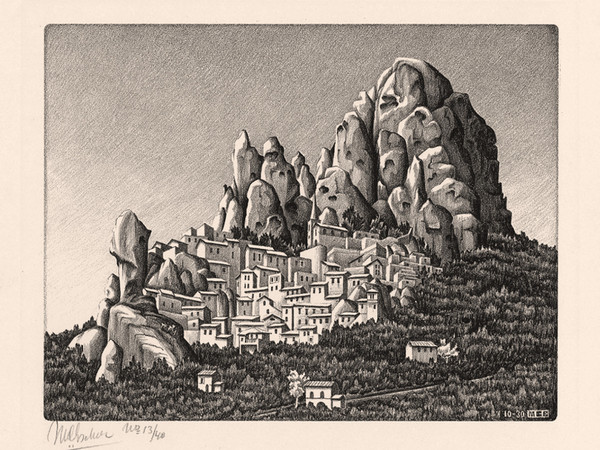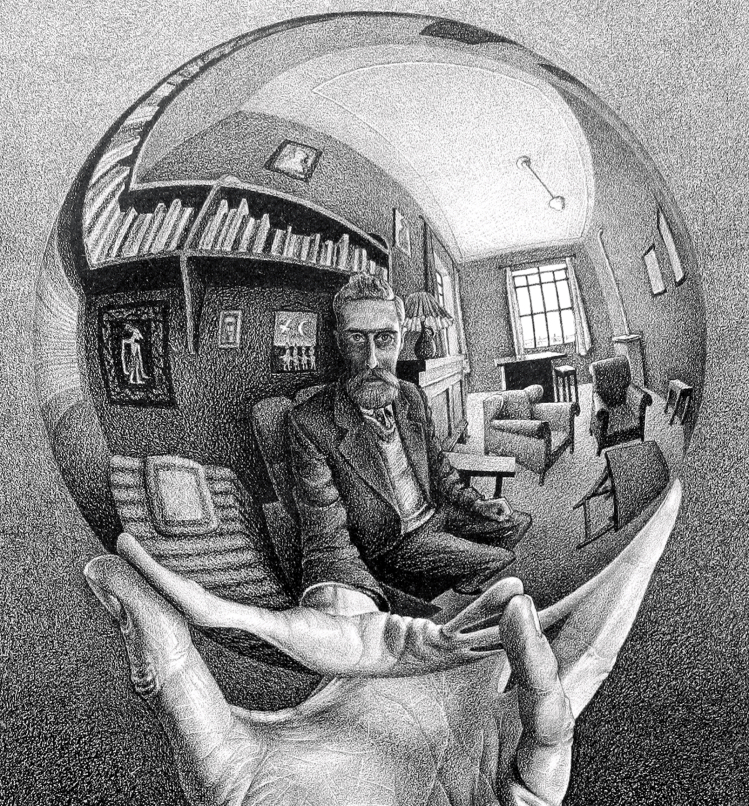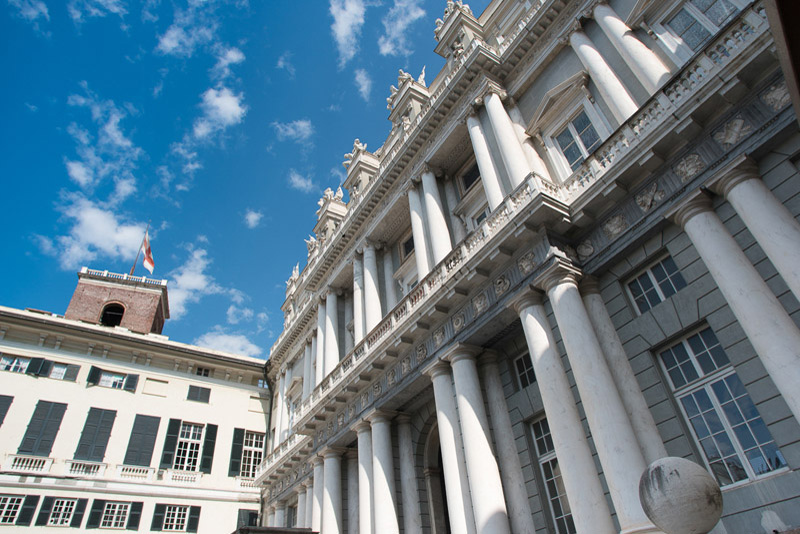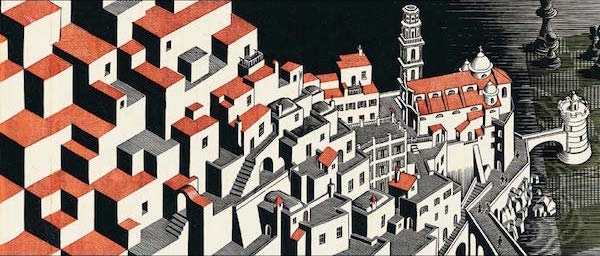The art of the absurd and the impossible: Escher at the Palazzo Ducale in Genoa
Maurits Cornelis Escher’s art is a sweaty and not obvious fortune, who today is certainly one of the most well-known and appreciated graphic artists in the contemporary world, thanks to images and imaginary worlds that amaze and enchant, that make you think and dream.
A passion that began in his youth, despite his ability being initially the subject of much criticism and little recognition. A career that began with a production dedicated to the landscape, drawing particular inspiration from the wonders of the Italian one that he finds himself meeting and visiting.

Maurits Cornelis Escher, Pentedattilo, Calabria, 1930 – Courtesy Arte
The reflection on the external world is then strongly replaced by that on the internal world (perhaps also due to the less emotion that the Swiss landscape aroused in him), but which above all turns out to be a primary necessity to be explored.
From here begins that exploration of the interpenetration between different worlds: the result is a complex and unreal representation of space, in which different points of view coexist together, giving life to a sort of three-dimensionality, often supporting themselves with the use of mirrors.
An approach that has always been more scientific than artistic, “I often feel closer to mathematicians than to my fellow artists” admitted Escher himself, demonstrating that the most certain rationality on the one hand and the most complete irrationality of art on the other. perfectly in his works.

Maurits Cornelis Escher, Mano con sfera riflettente, 1935 – Courtesy Theartpostblog
The impossibility in mathematics, the fantasy of geometry, will find their maximum expression from September at the Palazzo Ducale in Genoa, with the largest monographic exhibition ever dedicated to the artist, which is yet another example of the cultural ferment that will animate next autumn.
More than two hundred works will unfold in the eight sections of the exhibition, making us retrace his life and his career at the same time, in an incredible but linear evolution of the fruits of his genius.

Courtesy Palazzo Ducale Genova

